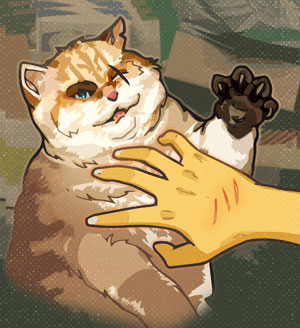By continuing your visit to this site, you accept the use of cookies.
Learn + I agreeBartonella henselae

Guess what: how about the cat!
Bartonella henselae is a facultative intracellular1 bacterium, which is often found in the saliva of domestic cats. The latter transmit the bacterium to each other through fleas (Ctenocephalides felis).
Cats do not show any signs of disease and can carry the bacterium Bartonella henselae even if they are clean and receive good care.
Bartonella henselae is responsible for the “Cat-scratch disease”. The bacterium is transmitted to humans through cat scratches or bites or by cat fleas directly.
Occasionally dogs, rabbits, or even monkeys can transmit it.
Children belong to the highest risk class, representing 80% of the people affected by this disease.


Infection under surveillance
The disease usually presents itself through the appearance of an inflamed lymph node (bump), close to the scratch or the fleabite, sometimes along with fever and headaches. In most cases, the lymph node bump spontaneously disappears in roughly 3 weeks and the use of antibiotics2 is not required.
Sometimes the infected lymph node can get worse and requires surgical treatment and/or the use of antibiotics. These treatments become necessary when the infection lasts for multiple months or when it is localized close to the eyes.

In case of scratches or cat bites
Do not take a cat scratch lightly, even if it is from your favorite pet. Clean and disinfect the wound and then make a bandage with a sterile compress. You do not need to see a doctor, unless the wound is deep or becomes hot and painful.
In case of a cat bite, there is an increased risk of developing a serious infection. Apart from Bartonella henselae, other more dangerous bacteria, such as Pasteurella multocida can be transmitted by cat bites and may cause serious infections, which will require a preventive antibiotic treatment.
Intracellular1 = Defines a bacterium that needs to be inside a cell to survive and multiply. Some bacteria are strictly intracellular, since they cannot multiply outside of a cell. Then there are facultative intracellular bacteria that can replicate even without a host cell. The strictly intracellular bacteria are difficult to grow in the laboratory and thus often remain undetected with cultivation methods routinely used for diagnostic purposes.
Antibiotic2 = A drug which allows to kill bacteria or at least to stop their growth. Antibiotics act against bacteria, but do not help treat diseases caused by viruses and parasites.
